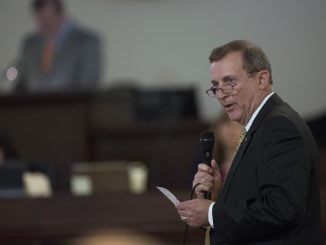
Close to 60% of all American taxpayers, about 100 million households, don’t pay one dime in federal income taxes. If a household makes $75,000 or less annually, it will most likely pay zero income tax. Between $75,000 and $100,000 of income, they may pay 1.8% of their income in federal taxes.
On the other end of the income spectrum, many to most wealthy people don’t pay any payroll or income taxes for the simple reason they don’t take any salary considered to be “earned income.” Many wealthy people take money out of their investments or business in the form of capital gains, which is taxed at about half the rate of marginal income taxes of salaries at a high level.
Perhaps 102 million American taxpayers will pay no attention to any leftist attempt to raise individual taxes because higher earned income tax rates mean nothing to people who are not paying income taxes in the first place.
Higher tax rates affect the same people higher taxes always hit ― the 50 million or so households with incomes between $75,000 and $500,000.
However, everyone who does earn a salary pays a flat-rate payroll tax for Social Security and Medicare entitlements. In 2023, wage-earners will pay payroll taxes on income up to $160,200 to fund Social Security and on all salaried income for Medicare. Payroll taxes are flat taxes ― the same percentage of income is paid by everyone, regressivity be damned.
Republicans typically promise massive tax cuts will lead to vastly more tax revenue from more rapid economic growth ― and magically balance our budget through economic growth alone.
Massive individual tax cuts don’t affect the same 102 million people who currently don’t pay income taxes. If a person doesn’t pay any income tax, they can’t possibly make any economic decisions based on changes in tax rates.
No matter what has happened in the tax code over the past 50 years, revenues flowing to Washington, D.C., via the IRS have stayed roughly at 18.5% of GDP. What has changed, however, is the composition of those tax revenues over the decades.
The share of federal income taxes has remained remarkably stable in the range between 42% and 48% of total tax receipts. However, social insurance payroll tax receipts have skyrocketed as a share of total receipts during the same time period. Payroll tax collections will constitute 32.6% of all receipts in 2023 whereas they constituted only 9.7% of federal receipts in 1950 (granted, pre-Medicare).
Corporate taxes accounted for 32.1% of all tax receipts in 1950. In 2023, it is estimated to be 8.6%.
Excise taxes were responsible for 13.4% of tax receipts in 1950. Next year it will be 1.9%. Even that puny amount will evaporate when everyone stops smoking cigarettes and starts driving EVs which do not generate an excise gas tax.
Tax revenues collected by Washington in 2022 came close to $5 trillion ― an all-time record despite the residual effects of COVID shutdowns and the horrible economic policies of the Biden administration. Even with record amounts of tax revenue flowing to Washington, America racks up more than $1 trillion of debt every year.
The problem we have is spending, not taxation. If Congress would hold annual spending increases down to around 2% per year for the next decade or so, there is at least a slight chance someone living today will once again see a balanced budget at the federal level.
Since we have a flat-rate tax in force already ―the payroll tax ― there has to be some optimal way to use that as a model and replace the existing sclerotic income tax system in its entirety. Abolish all tax deductions, exemptions and exceptions and expose the full amount of income made by every person to the flat rate ― and see what happens to the economy.
We wouldn’t need 87,000 new IRS agents because the entire Internal Revenue Service could be cut by 99% if all we had was one flat-rate tax to collect. That would be one great way to start the new year.



